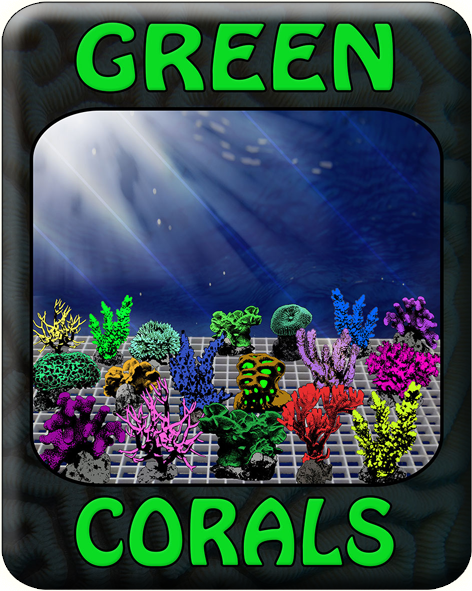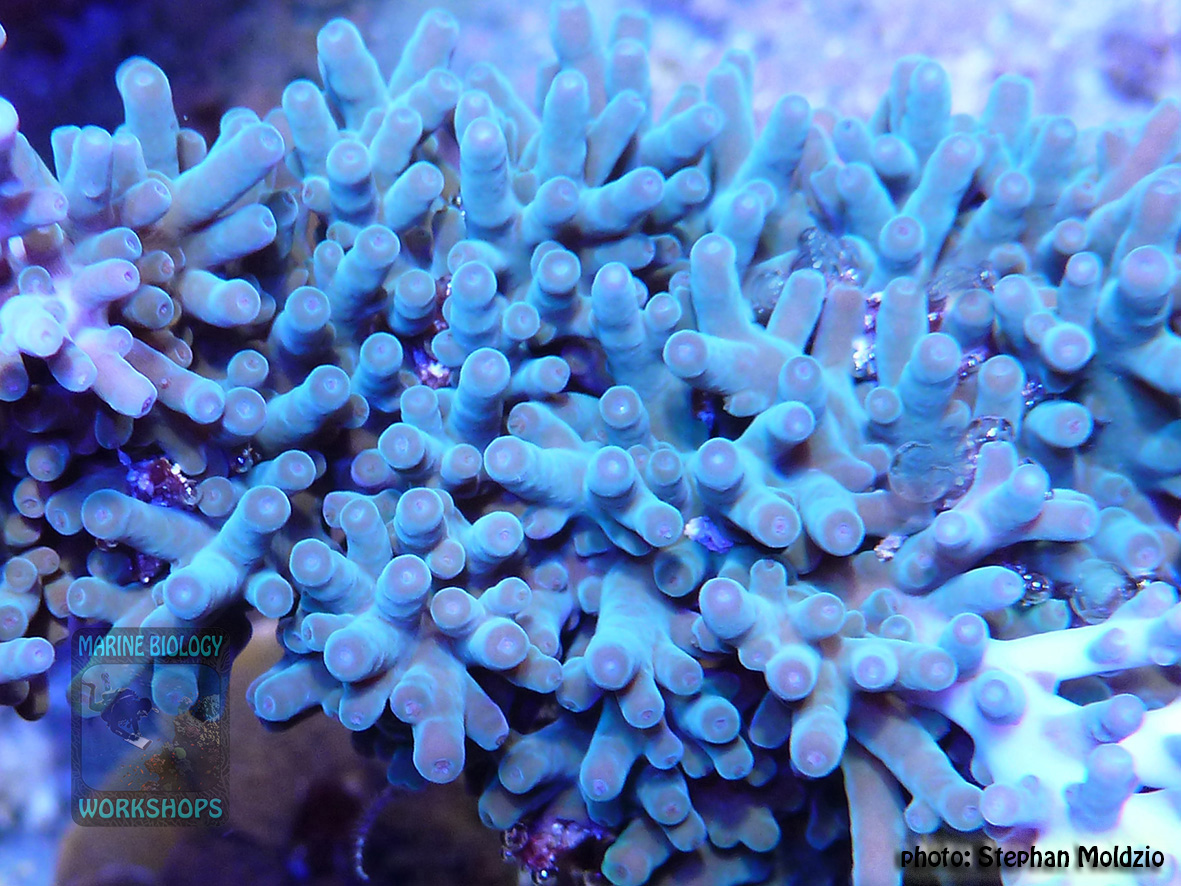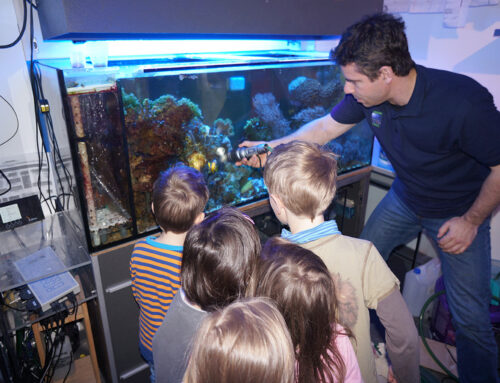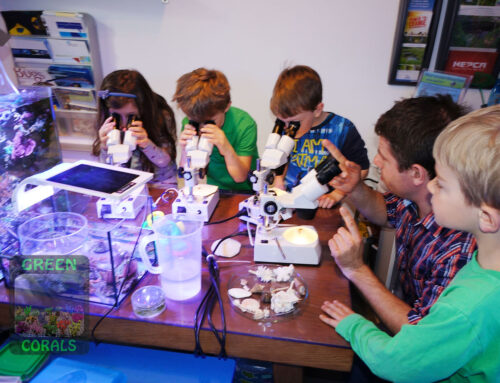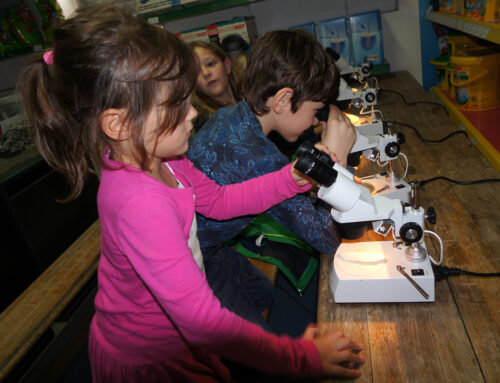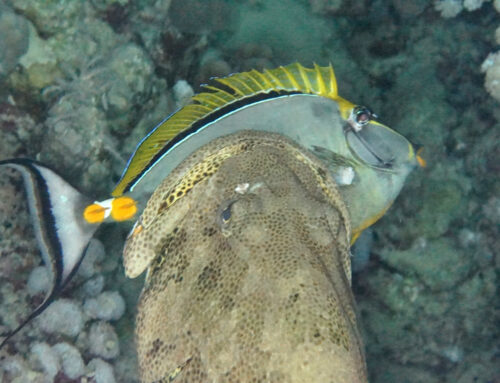On 10 and 11 October a coral identification workshop with Russell Kelley, author of the” Indopacific Coral Finder” took place in the “Haus der Wissenschaft” in Braunschweig.
Russell Kelley is a geologist, science communicator and founder of the “Coral Identification Capacity Building Program” (CICBP), which aims to empower more and more people for the skill of coral ID. This skill is not only essential for reef monitoring, protection and management of coral reefs, but also of interest for the community of scuba divers, snorkelers and marine aquarists. Following the motto “Be your own guide”, any nature lover (so even someone who is not a deep-rooted zoologist or taxonomist) can with the CORAL FINDER determine corals to genus level quickly and easily. Extensive and freely available resources, films and training materials have been developed around the CORAL FINDER at www.byoguides.com. So far, numerous workshops were conducted by the CICBP with round about 500 participants. After his workshops in Australia and other countries of the Coral Triangle and the Pacific, it was Russell’s first workshop in Germany and his second in Europe. On Saturday morning now, ten participants on tiptoe arrived on site together, including three from abroad, who had come especially for the workshop! Among the participants were three marine aquarists, and six marine biologists, who are involved in reef monitoring programs. The workshop material included the CORAL FINDER as well as various printouts, a toolkit for practical use, an USB stick with helpful materials and all training and revision movies in high resolution. At the beginning of the course Russell presented the CORAL FINDER method and gave a few practical tips for use above and under water (“Suncreme is the natural predator of the CORAL FINDER”;-) ) The use of the CORAL FINDER was practiced with various tasks and tests. By examining of photos, coral skeletons and live coral, armed with magnifying glasses, the participants could try to identify the corals. In between Russell went extensively on “difficult cases” or “exceptions to the rule”, which showed once again the great variety and plasticity of nature in reality. That makes life difficult for taxonomists, who are eager to put it into categories. For the determination exercises a total of 33 coral species out of 24 genera were provided by GREEN CORALS / Braunschweig:
Acanthastrea, Acropora, Alveopora, Blastomussa, Caulastrea, Duncanopsammia, Euphyllia, Favites, Galaxea, Goniopora, Hydnophora, Lobophyllia, Montipora, Pavona, Physogyra, Platygyra, Porites, Seriatophora, Stylophora, Turbinaria and Tubipora, Heliopora, Millepora, Sinularia.
The aquarium cultivated corals were grown under 100% renewable energy. In addition, bleached coral skeletons out of a variety of genera were ready to ID. Now, how do I determine a coral in front of me? There exists something like a standard procedure for the use of CORAL FINDER: Where are the polyps? Where is the mouth? What kind of walls have the corallites? – Separate, shared or indistinct walls? Do we have Septae, Costae or Septo-Costae? Maybe even “paliform lobes”? How big are the polyps? So you start with the front page of the CORAL FINDER and choose a specific “Key Group”. For example, “massive or thick colonies”, and then in more detail “corallites with separate walls ; <8mm “. Thus, you go directly from the front page to the “Look-Alike Page” on page 10, where four genera are offered for this combination of features: Favia, Montastrea, Astreopora and Cyphastrea. Then, a quick check with our “Eye-Brain Supercomputer” – we humans can recognize shapes, differences and similarities with that automatically and instantaneously. Now we may be able to exclude some genera, or focus on other ones for further investigation. After checking the “1x True Scale Box”, the precise characteristics are to be matched with the “Character Informations”: Do the parent corallite split into two daughter corallites within the corallite wall or are new corallites formed as external buds, outside the corallite wall (intra- / extra tentacular budding)? Do the vertical blades inside the corallite walls (“septae”) always have approximately the same size, or do they have different sizes? Are the large corallites more protruding than the smaller ones? Have the corallites a “ragged” appearance? Do the blades outside the corallite walls (“costae”) have fine spines? Are there “beads” on the tissue between the corallites? So you may opt for a certain genus now and go to the pages in “Corals of the World”(J.E.N. Veron, 2000), the current standard reference of coral taxonomy. That’s it! 🙂 Finally, some good news for those who have missed this outstanding workshop: Instead of the formerly expensive order from Australia, the CORAL FINDER is now available through an international sales system! Here you can also order the REEF FINDER, published only two months ago, which functions according to a method similar to the CORAL FINDER: www.byoguides.com.
In a few months there will also be a freely available and even interactive update of “Corals of the World”, in which the recent taxonomic findings are taken into account: http://coralsoftheworld.com
